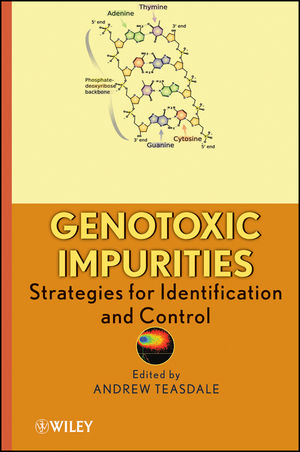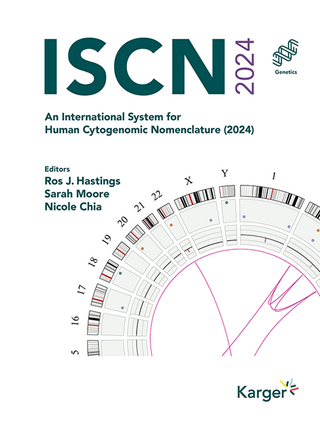
Genotoxic Impurities
John Wiley & Sons Inc (Verlag)
978-0-470-49919-1 (ISBN)
This book examines genotoxic impurities and their impact on the pharmaceutical industry. Specific sections examine this from both a toxicological and analytical perspective. Within these sections, the book defines appropriate strategies to both assess and ultimately control genotoxic impurities, thus aiding the reader to develop effective control measures. An opening section covers the development of guidelines and the threshold of toxicological concern (TTC) and is followed by a section on safety aspects, including safety tests in vivo and vitro, and data interpretation. The second section addresses the risk posed by genotoxic impurities from outside sources and from mutagens within DNA. In the final section, the book deals with the quality perspective of genotoxic impurities focused on two critical aspects, the first being the analysis and the second how to practically evaluate the impurities.
ANDREW TEASDALE, PhD, is a senior QA executive with AstraZeneca and chairs the company's internal genotoxic impurities advisory group. With over fifteen years of experience in analytical chemistry and quality assurance, Dr. Teasdale has published a number of papers relating to GIs and has been a speaker on genotoxic impurities at a number of conferences. Dr. Teasdale has also led two expert groups working in the field of genotoxic impurities, including an analytical group in the UK and a Project Quality Research Institute (PQRI) working group, which focused on the critical area of sulfonate ester formation and control.
Foreword ix
Preface xi
Contributors xiii
Part 1 Development of Genotoxic Impurities Guidelines and the Threshold of Toxicological Concern Concept
Chapter 1 Historical Overview of the Development of Genotoxic Impurities Guidelines and TheirImpact 3
Ron Ogilvie and Andrew Teasdale
Chapter 2 Development of the Threshold of Toxicological Concern Concept and Its Relationship toDuration of Exposure 27
Alessandro Brigo and Lutz Müller
Part 2 Evaluation of Genotoxic Risk from a Preclinical Perspective
Chapter 3 Genetic Toxicity Testing to Qualify Alerting Impurities 67
Mike O’Donovan
Chapter 4 Use of Structure Activity Relationship (SAR) Evaluation as a Critical Tool in the Evaluation ofthe Genotoxic Potential of Impurities 97
Susanne Glowienke and Catrin Hasselgren
Chapter 5 Compound-specific Risk Assessments for Genotoxic Impurities: Examples and Issues 121
Andrew Teasdale and Charles Humfrey
Chapter 6 Human Genotoxic Metabolites: Identification and Risk Management 151
Krista Dobo, Don Walker, and Andrew Teasdale
Part 3 Perspective on Risk Posed by Genotoxic Impurities
Chapter 7 Genotoxic Thresholds 171
Gareth J.S. Jenkins, George E. Johnson, James M. Parry, and Shareen H. Doak
Chapter 8 Genotoxic Impurities: A Risk in Perspective 193
Dave Elder and Jim Harvey
Part 4 Assessment of Genotoxic Risk: Quality Perspective
Chapter 9 Strategies for the Evaluation of Genotoxic Impurity Risk 221
Andrew Teasdale, Dave Elder, and Simon Fenner
Chapter 10 Analysis of Genotoxic Impurities: Review of Approaches 249
Dave Elder
Chapter 11 Development of a Strategy for Analysis of Genotoxic Impurities 281
Andrew Baker
Chapter 12 Strategic Approaches to the Chromatographic Analysis of Genotoxic Impurities 305
Frank David, Karine Jacq, Gerd Vanhoenacker, and Pat Sandra
Chapter 13 Analysis of Genotoxic Impurities by Nuclear Magnetic Resonance Spectroscopy 351
Andrew Phillips
Chapter 14 Mechanism and Processing Parameters Affecting the Formation of Sulfonate Esters:Summary of the Product Quality Research Institute Studies 385
Andrew Teasdale
Chapter 15 Aspects to Consider When Low-level Active Pharmaceutical Ingredient/Drug ProductDegradants Have the Potential for Genotoxicity 409
Alan P. McKeown and Andrew Teasdale
Index 423
| Erscheint lt. Verlag | 1.3.2011 |
|---|---|
| Verlagsort | New York |
| Sprache | englisch |
| Maße | 163 x 241 mm |
| Gewicht | 758 g |
| Themenwelt | Medizin / Pharmazie ► Medizinische Fachgebiete ► Pharmakologie / Pharmakotherapie |
| Studium ► 2. Studienabschnitt (Klinik) ► Humangenetik | |
| Naturwissenschaften ► Chemie | |
| ISBN-10 | 0-470-49919-2 / 0470499192 |
| ISBN-13 | 978-0-470-49919-1 / 9780470499191 |
| Zustand | Neuware |
| Informationen gemäß Produktsicherheitsverordnung (GPSR) | |
| Haben Sie eine Frage zum Produkt? |
aus dem Bereich


